Pool Renovations: What to Do With an Old Pool in Your New Backyard
November 15th, 2021
6 min read
By Alex Planes
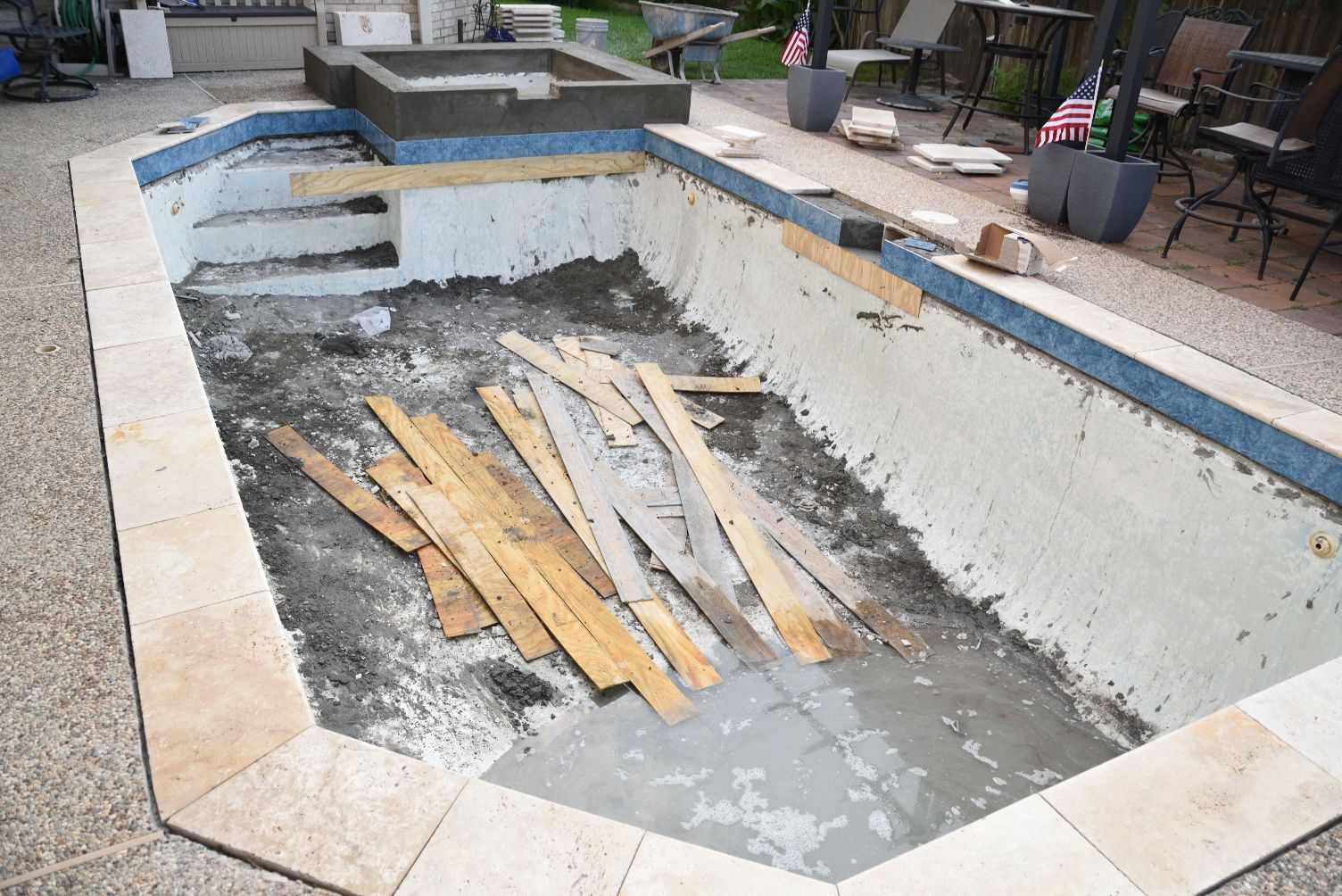
Let’s say you’re in the market for a new home, and you’ve been doing your research and visiting open houses to narrow down your choices. Like millions of other prospective home buyers, you might discover something unexpected in the backyard of one (or more) properties you examine: an old swimming pool, fallen into disrepair.
If you’re facing this sort of situation, you’re not alone. It’s not uncommon for existing homes to come with pre-built pools -- over 10 million homes in the United States have pools, and many thousands more are installed each year. Some homeowners take better care of their pools than others, leaving future owners with disused pools.
If you’ve bought a home with an old, unused pool, what can you do? The answer depends on several factors, most of which are beyond your control until you take ownership of your new home.
In many cases, it is possible to renovate an old pool to transform it into a beautifully modern backyard oasis. Should you do it yourself? Is it better to leave this job to the pros? And when does it make more sense to simply start over by removing your old pool to install a completely new one?
Let’s take a look at your options as the new owner of an old pool...
What condition is your old pool in?
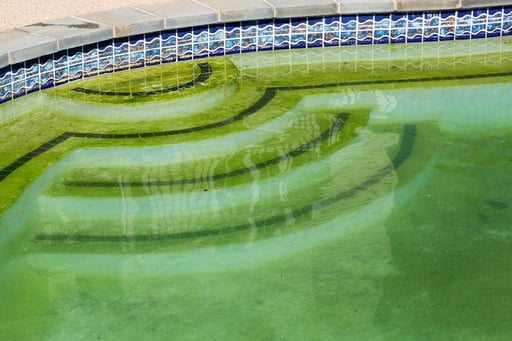
Perhaps the biggest factor in your pool renovation decision will be the initial condition of the pool you’ve “inherited.”
Let’s say you’ve lucked out and there’s nothing really wrong with your new old pool. It’s just a little grimy, a little dirty, a little unkempt.
Is the pool’s interior surface in good condition? Do its pump and filter systems still work well? Is the patio and other surrounding décor still usable and reasonably clean?
Congratulations, you’ve lucked out, and you’ve bought a house with a perfectly usable pool. Its previous owners simply didn’t prioritize pool care before selling their home.
If everything still works, you might be able to get away with a bit of deep cleaning -- perhaps some pressure washing, pool shock, and other do-it-yourself upkeep can restore your pool to its former glory.
In many cases, it’s fairly simple to recover a pool that’s simply sat unused for a few months. You may want to hire a reputable pool maintenance company to ensure all the plumbing, pipes, fittings, and other less-visible components of your pool are properly (and safely) cleaned out.
If your new pool is a concrete or gunite pool, you may need to acid wash the interior surface -- a task best left to the pool pros -- or even refinish it with new plaster. We’ll cover that further in the next sections...
If your pool works, but its parts don’t…
It’s not uncommon for swimming pool machinery, such as pumps, filters, heaters, or saltwater chlorinators to break down over time.
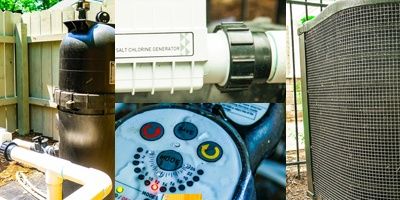
All machines break down -- pool machinery just happens to be at greater risk of failure due to its constant operation in water. This is especially true if your home’s former owners didn’t properly winterize the pool and its machinery.
Freezing temperatures can wreak havoc on anything with water in it, and you may find yourself needing to replace large parts of the pool’s machinery, including its pipes and fittings, if things haven’t been well-maintained.
If the pool interior looks salvageable, but you’re uncertain whether or not you’ll be able to use its machinery, we highly recommend consulting a reputable pool maintenance company. They should be able to test your systems, find any faults in your equipment, and recommend the most reasonably cost-effective solutions.
However, it probably won’t be cheap. Most integral swimming pool machinery can cost several thousand dollars, and if there’s damage to your pool’s plumbing system, you may need to decide if it’s better to renovate your pool or to replace it entirely. At this point, you may want to contact a reputable pool builder. We'd love to put you in touch with your local River Pools franchise. Just click below to reach out!
It’s also quite common for your old pool to have working parts, but a worn-down interior surface. If you’ve inherited a pool with good plumbing but bad surfaces, you might be looking at a costlier fix…
What will it cost to resurface an old pool?
We work with fiberglass pools because we prefer their surface durability -- you may never need to replace a fiberglass pool’s surface if it’s reasonably well-maintained.
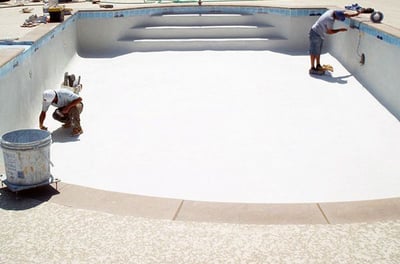
However, the same can’t be said for the other major types of inground pools, which have concrete or vinyl liner interior surfaces.
Both concrete and vinyl liners will need to be replaced, regardless of how well your pool’s been maintained.
Concrete pools must be resurfaced roughly once every 10 to 15 years. This can cost $10,000 or more, depending on the size and complexity of your pool’s interior. An unused concrete pool may need to be resurfaced before use regardless of its age, as the interior plaster surfaces of concrete pools can quickly deteriorate without proper care.
Vinyl liners tend to last between five and 10 years, with most inground vinyl liner pools topping out at about nine years of useful life. A lack of care and maintenance will obviously hasten the need for replacement, which typically costs at least $4,000 when handled by a pool pro.
You could try to replace a vinyl liner yourself, but we do not recommend it -- one mistake, and you might wind up with a useless, leaky liner you’ll just have to replace again right away.
Fiberglass pools shouldn’t need resurfacing, but a disused fiberglass pool may still end up with an unsightly finish you’ll want to refresh. However, it’s costly to resurface a worn fiberglass pool -- smaller fiberglass pools can easily cost $10,000 or more to refinish.
Is it better to renovate an old pool or replace it?
Unfortunately, some old pools will just be too far gone to be effectively restored to swimmable shape. This becomes truer the longer your old pool has sat unused and unmaintained. If your new home includes a pool you simply can’t justify paying thousands of dollars to restore, you’ll be faced with two serious choices:
Should you fill in or replace your old inground pool?
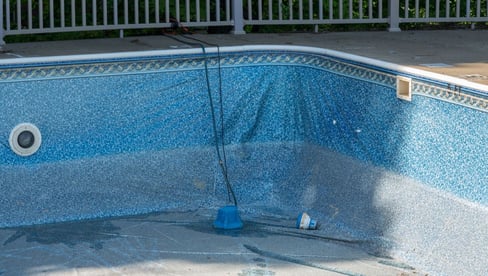
If you never planned to use a backyard pool in the first place, it’s an easy choice. However, many homeowners don’t want to abandon the dream of a backyard oasis -- they just can’t justify renovating an old pool when it simply doesn’t suit their needs.
If your existing old pool is the wrong shape, size, depth, or material, or it includes too many (or too few) costly fixtures, it may make more sense to replace the whole thing.
The best way to determine whether you’re better off renovating or replacing your old pool is to answer a few simple questions:
- Would the current pool suit your needs once it’s renovated?
- Would it cost significantly less to renovate your pool than replace it?
- How important is the “perfect pool” to your dreams of homeownership?
Many new homeowners with old pools simply don’t like their existing pool enough to justify keeping it, regardless of the cost savings renovation might offer over replacement. Maybe the shape is wrong, or the features aren’t appealing, or the overall pool design just looks dated for the 2020s. If that's the case, you may want to start planning a new pool project. You can get estimates in a snap for any custom concept you want using our Design and Price tool. Just click the button below to give it a try:
How much does it cost to replace an old pool?
Replacing an old pool can cost nearly as much as installing a new pool, which is essentially what you’ll be doing if you decide to rip the old one out and start from scratch.
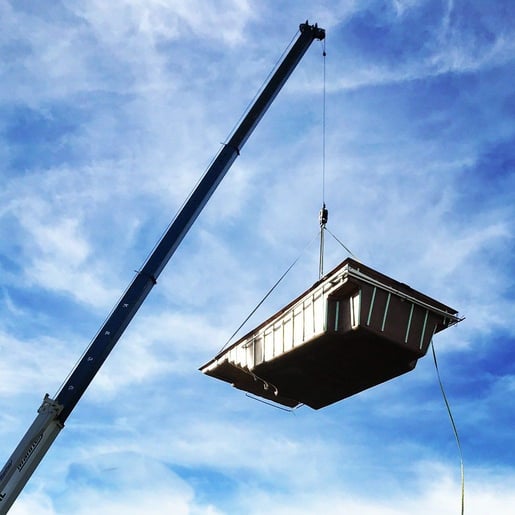
The nice thing about replacing an old pool is that its costs tend to not be that different than the cost to install a brand new pool in a yard that’s never had one before.
Your pool pros will need to dig up the old pool and get rid of it, but there would’ve been a lot of digging involved in a new pool project, too.
On average, it costs between $50,000 and $70,000 to replace an old concrete pool with a new fiberglass pool. This cost can vary, as can the cost of any pool project, based on the size of the dig, the complexity of the project, and any add-ons you may want installed with your new fiberglass pool.
Replacing an old vinyl liner pool with a fiberglass pool can cost about $50,000 to $65,000. In both cases, this is either in line with or slightly more expensive than simply installing a new pool in an unmodified yard.
However, anyone who’s spent any time in construction can tell you that it can often cost more to renovate a disused property than it might cost to build a new one from the ground up. The same is true with pools.
If you’ve got an old pool in your backyard, and you’re not sure what your best course of action might be, please reach out to a local pool pro. Our network of River Pools installers operates across the United States, and we’d be happy to put you in touch with one of our local representatives so you can figure out what to do with that old pool.
Whether renovating or replacing, it’s highly recommended you consult a professional -- there are simply too many factors in play for us to ever recommend someone without extensive pool-building experience attempt to renovate or replace their own pools.
Got any questions about pool renovations that haven’t been answered here? Please ask us in the comments. We’re happy to help pool owners make the most of their pools, no matter what condition they might be in!
At River Pools, we manufacture world-class fiberglass pools for customers across North America. If you're shopping around for a fiberglass pool, feel free to take a look at our catalog of models, visit our extensive video library, try out our pool cost calculator, or request custom pricing using the button below.



